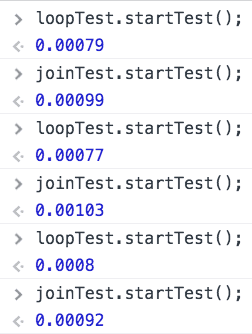Timing Methods in JavaScript, Part 2
June 15, 2016
This is the second part of a two-part blog post. The previous post can be found here. The previous post details a method by which a function can be timed using timers on the console object. While the timers do provide us with the time to run a function, we must rerun the function numerous times and record the output values for later analysis. This process can be streamlined and automated using a SpeedTest constructor.
The SpeedTest should do two things for us. It should be able to run a given function as many times as we choose. It should return the average time in milliseconds it took to run the function.
To begin, the SpeedTest will follow the pseudoclassical instantiation pattern. The constructor needs to accept a function to test, the arguments for the function (if necessary) and the number of times the function should be run. The number of times is an optional argument and a default value of 10,000 will be provided.
var SpeedTest = function (fnToTest, argsArr, repetitions) {
this._fnToTest = fnToTest;
this._argsArr = argsArr;
this._repetitions = repetitions || 10000;
};
There is one method on the SpeedTest constructor that invokes the _fnToTest as many as times specified by the _repetitions property. This method returns the average run time for _fnToTest.
SpeedTest.prototype.startTest = function () {};
The startTest method must keep track of the total time required for the _fnToTest to run for _repetitions. To determine the time for a single invocation, the Date function can be used. By getting the Date immediately before the function runs and immediately after, the difference is the time for a single run. (This is then repeated.)
Typically the Date object is used as follows: var today = new Date();, returning the current date (day name, month, day, year, and time). This information is not very useful when it comes to determining the time difference when running a function. By placing a + in front of the keyword new when invoking the Date object, the value is converted into a number. The number represents the time, in milliseconds, since January 1, 1970. At the time of writing, + new Date(); // 1465944058670 milliseconds have elapsed since Jan. 1, 1970.
SpeedTest.prototype.startTest = function () {
var sum = 0,
start,
end;
for (var i = 1; i <= this._repetitions; i++) {
start = +new Date();
this._fnToRun(this._argsArr);
end = +new Date();
sum += end - start;
}
return sum / this._repetitions;
};
The return value from the startTest method is the average run-time, which is simply the total time divided by the number of repetitions.
Let’s pull in the two functions we want to test. The functions have been refactored slightly to take a single argument array, containing any arguments required for the function.
function concatArrayLoop(arr) {
var arrOfInterest = arr[0];
var results = '';
for (var i = 0, len = arrOfInterest.length; i < len; i++) {
results += arrOfInterest[i];
}
return results;
}
function concatArrayJoin(arr) {
var arrOfInterest = arr[0];
return arrOfInterest.join('');
}
For the functions, the argument array will house a single array at the zero index, phone = [ 8, 7, 6, ‘-’, 5, 3, 0, 9 ];.
We create instances of the SpeedTest by passing in the function names, an array with the phone array, and number of repetitions.
var phone = [8, 6, 7, '-', 5, 3, 0, 9];
var loopTest = new SpeedTest(concatArrayLoop, [phone], 100000);
var joinTest = new SpeedTest(concatArrayJoin, [phone], 100000);
Finally, we invoke the startTest method on each instance and see the average time in the console.
loopTest.startTest();
joinTest.startTest();
When using the SpeedTest constructor, we see that using a for loop is faster than using the native join method for creating a string from the values in an array.
